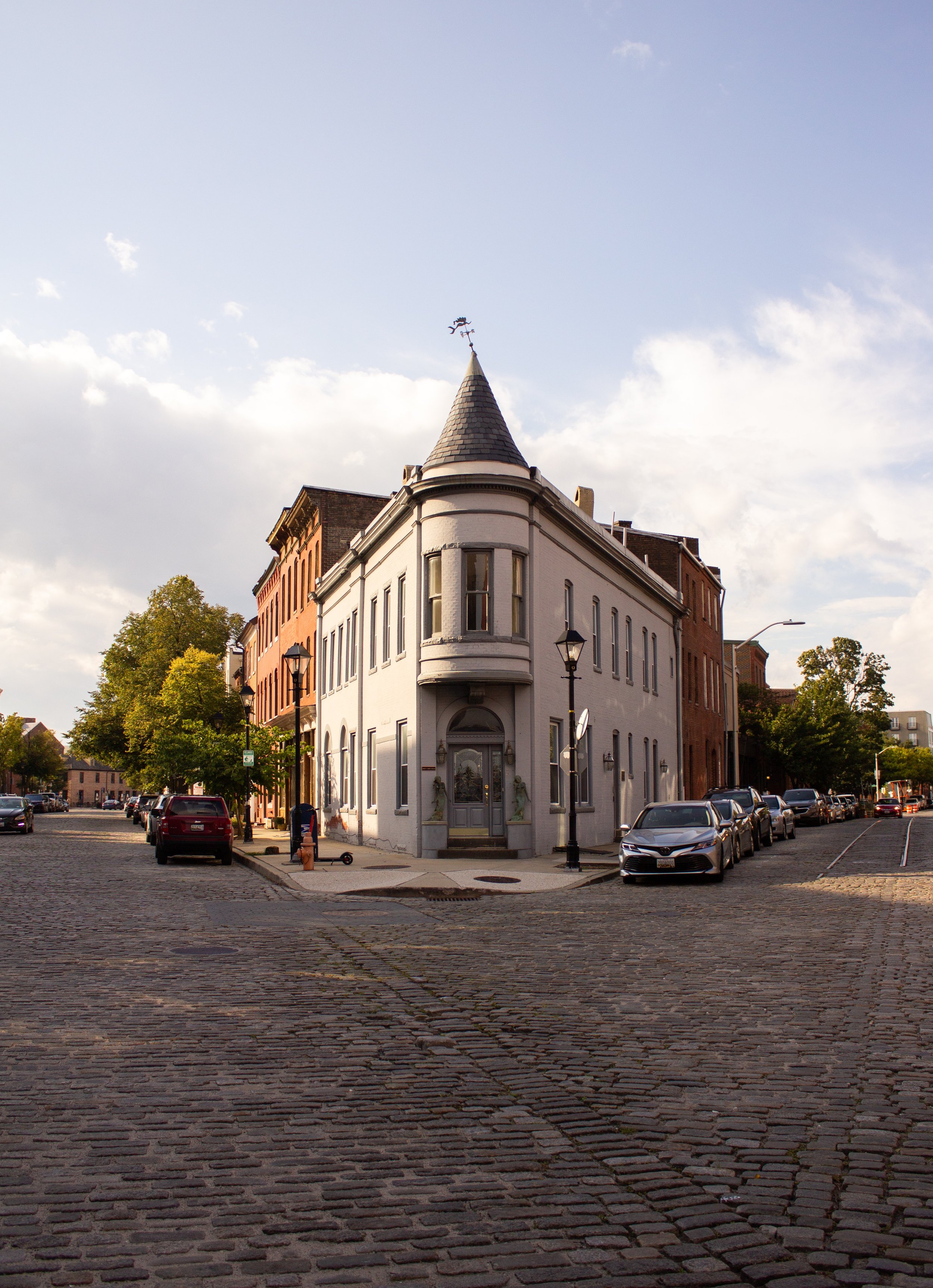Baltimore Bridge Redesign Unveiled for Enhanced Safety and Capacity
A fresh, innovative design for the Baltimore bridge that collapsed earlier this year has been revealed. The new proposal, crafted by Italian design firm Carlo Ratti Associati along with structural engineer Michel Virlogeux and international constructor Webuild, aims to drastically improve safety and functionality. After the tragic incident in March caused by a collision with the container ship MV Dali, the new design promises a more resilient structure.
The proposed cable-stayed bridge will feature a significantly wider main span—stretching from 1,200 ft to 2,230 ft—positioning the primary supports in shallow waters and away from busy vessel lanes to prevent future accidents. It also raises the clearance height from 185 ft to 230 ft, meeting the latest shipping standards and ensuring the Port of Baltimore continues to thrive as a major global hub.
Additionally, the redesign includes an expansion of the roadway, adding a lane in each direction to accommodate increasing traffic, enhancing both the bridge’s capacity and its role in local and national connectivity.
Webuild's CEO, Pietro Salini, expressed commitment to the project, emphasizing readiness to contribute pro bono to restore this crucial piece of infrastructure. This collaboration highlights a significant step towards not just rebuilding but reimagining what a bridge can represent for Baltimore and beyond.
Read more at The NY Post >
Why This Matters:
It's not just about fixing what broke—it's about upgrading infrastructure to better handle the demands of modern transport. The new design promises a wider span and higher clearance, which means bigger ships can pass through without a hitch, and more lanes mean smoother traffic flow. That’s less congestion and potentially faster delivery times for anything moving through the area.
Our Take:
This isn’t just a repair job; it’s a strategic upgrade. With the bridge supporting higher traffic volumes and accommodating larger vessels, it could mean a boost in efficiency for logistics operations in and out of Baltimore. Plus, the focus on safety with more robust engineering could help avoid costly disruptions in the future. This kind of forward-thinking in infrastructure could set a precedent that might ripple through other parts of the country. Worth keeping an eye on how this plays out—not just for the local benefits, but for the broader implications it might have on logistics nationwide.
The House Freedom Caucus is shaking things up with their demands for funding the reconstruction of Baltimore's Francis Scott Key Bridge.
President Joe Biden is set to get a close-up view of the recovery efforts at the collapsed Francis Scott Key Bridge in Baltimore, where a massive operation involving cranes, ships, and diving crews is underway.
In Baltimore, officials have quickly established a temporary shipping route around the Francis Scott Key Bridge collapse site to resume port operations.
After the recent collapse of the Francis Scott Key Bridge in Baltimore due to a container ship collision, resulting in six deaths, President Biden announced the federal government's commitment to fully fund the bridge's reconstruction.
The Francis Scott Key Bridge near Baltimore collapsed early Tuesday morning after a huge container ship hit one of its pillars.
A recent federal audit of Boeing revealed more than thirty deficiencies in the company's operations, triggered by an incident where an air panel blew off an Alaska Airlines plane mid-flight.
In January, Boeing saw a decline in aircraft orders and deliveries following a midflight incident involving a fuselage panel on one of its 737 Max 9s.
Boeing is facing yet another hiccup in its production of 737 Max jets.
United Airlines is reconsidering its fleet plans involving the Boeing 737 Max 10 due to a series of delays and recent grounding issues.
The National Transportation Safety Board has located the plug covering an unused exit door that blew out minutes into an Alaska Airlines flight.
A small trucking company, Elshaddai Truckers and Logistics, found themselves staring at a hefty bill for a tow job when one of their box trucks gave out on the busy southbound stretch of I-75 in Henry County, Georgia.
A Reuters report highlights Tesla's alleged negligence in addressing known defects in its vehicles, including suspension and steering systems, and making customers pay for repairs.
Los Angeles' Interstate 10, which had been closed for over a week due to an arson fire, reopened ahead of schedule.
The federal government plans to allocate over $16 billion to enhance the Northeast Corridor, the busiest rail line in the country, connecting cities like Washington, New York, and Boston.
A significant portion of the Green Line Extension in Massachusetts needs track repairs due to narrowness issues, with 50% of the Union Branch tracks and around 80% of the Medford/Tufts Branch tracks requiring widening.
The incident involving a fire on a cargo ship carrying electric vehicles highlights potential insurance challenges and setbacks for the EV revolution.
Florida Governor Ron DeSantis signed a bill allowing the study of phosphogypsum in road construction, overturning a federal prohibition under the Trump administration but reinstated by Biden's EPA.
In their commentary published in The Baltimore Sun, Samuel Jordan, Eric Norton, and Michael Scepaniak criticize Baltimore's new regional transportation plan, Resilience 2050, for perpetuating an automobile-centric approach.
Kodiak Robotics is leading the pilot of the Commercial Vehicle Safety Alliance's new protocol for autonomous trucks called the Enhanced Commercial Motor Vehicle Inspection Standard program.
Ryder System has launched Torque by Ryder, a mobile maintenance service that offers on-site repairs for fleets with no long-term contract.
As the trucking industry explores electric vehicles, maintenance shops face the challenge of upskilling workers to handle the complexities of EV powertrains.
Ryder, a transportation solutions company, shares insights on its journey of integrating electric vehicles (EVs) into fleets.
The response to the crash and subsequent reconstruction of a section of Interstate 95 in Philadelphia showcased effective emergency management and public messaging.
Pennsylvania officials have revealed their plans to rebuild a collapsed section of Interstate 95 in Philadelphia.
Trucking sector expenses for parts and labor have shown signs of stabilization in the first quarter of 2023, according to a report from the American Trucking Associations (ATA)'s Technology & Maintenance Council and Decisiv Inc.
New York State Thruway Authority is investing $450 million in a project to revamp and modernize its 27 service areas by 2025, aiming to enhance the travel experience for truckers and other motorists.
The adoption of augmented reality (AR) in commercial vehicle maintenance has been slower compared to passenger car shops.
Experts argue that reforming outdated permitting laws is crucial for boosting the economy through investments in upgrading infrastructure and transitioning to green technologies.
The Southwest Florida coastline is set to receive thousands of truckloads of sand as beach restoration efforts continue, less than a year after governments in Lee and Collier counties spent millions on restoring the beaches from erosion.































The U.S. airline regulators are looking into an unusual incident where a part of a Boeing 737-800’s engine came loose during takeoff.